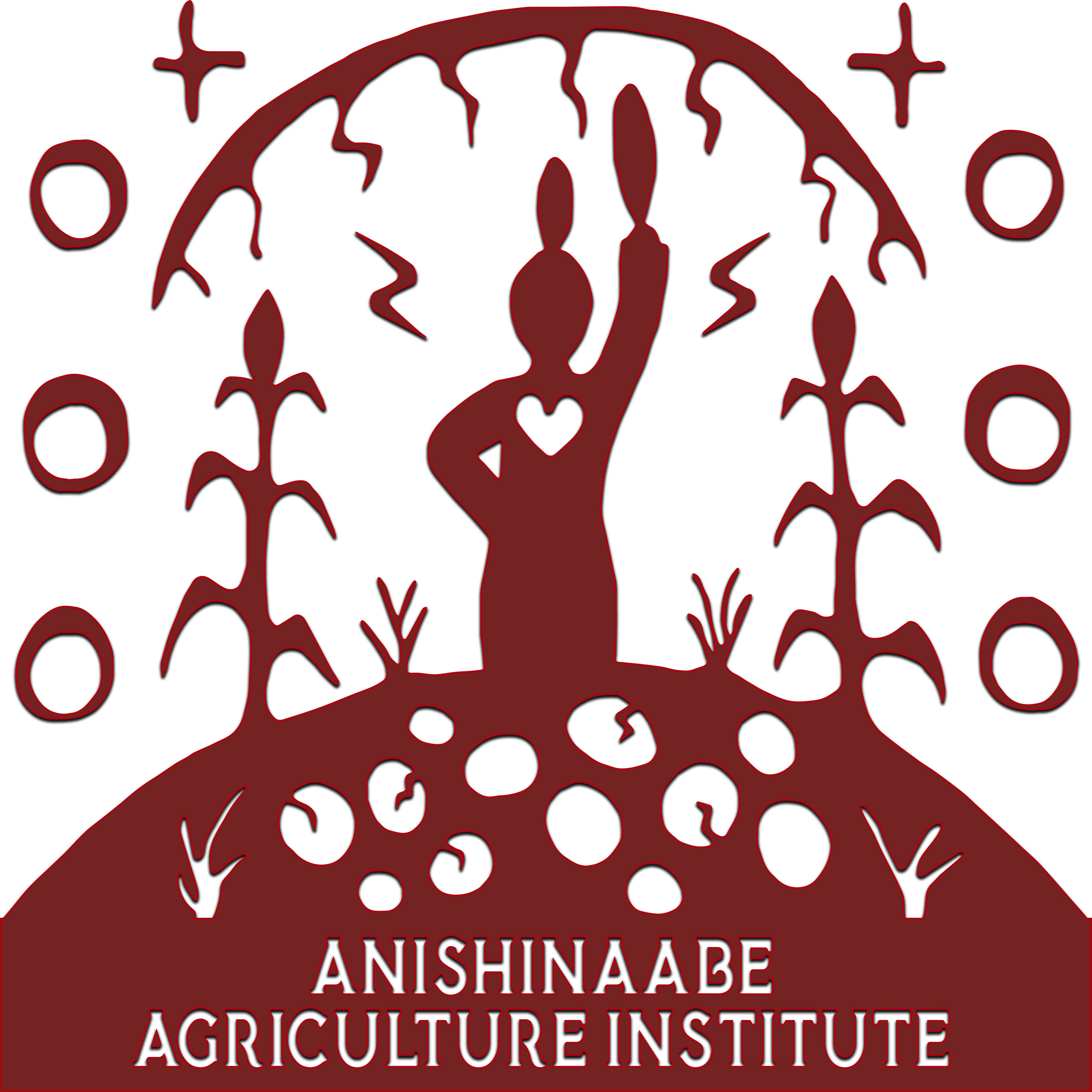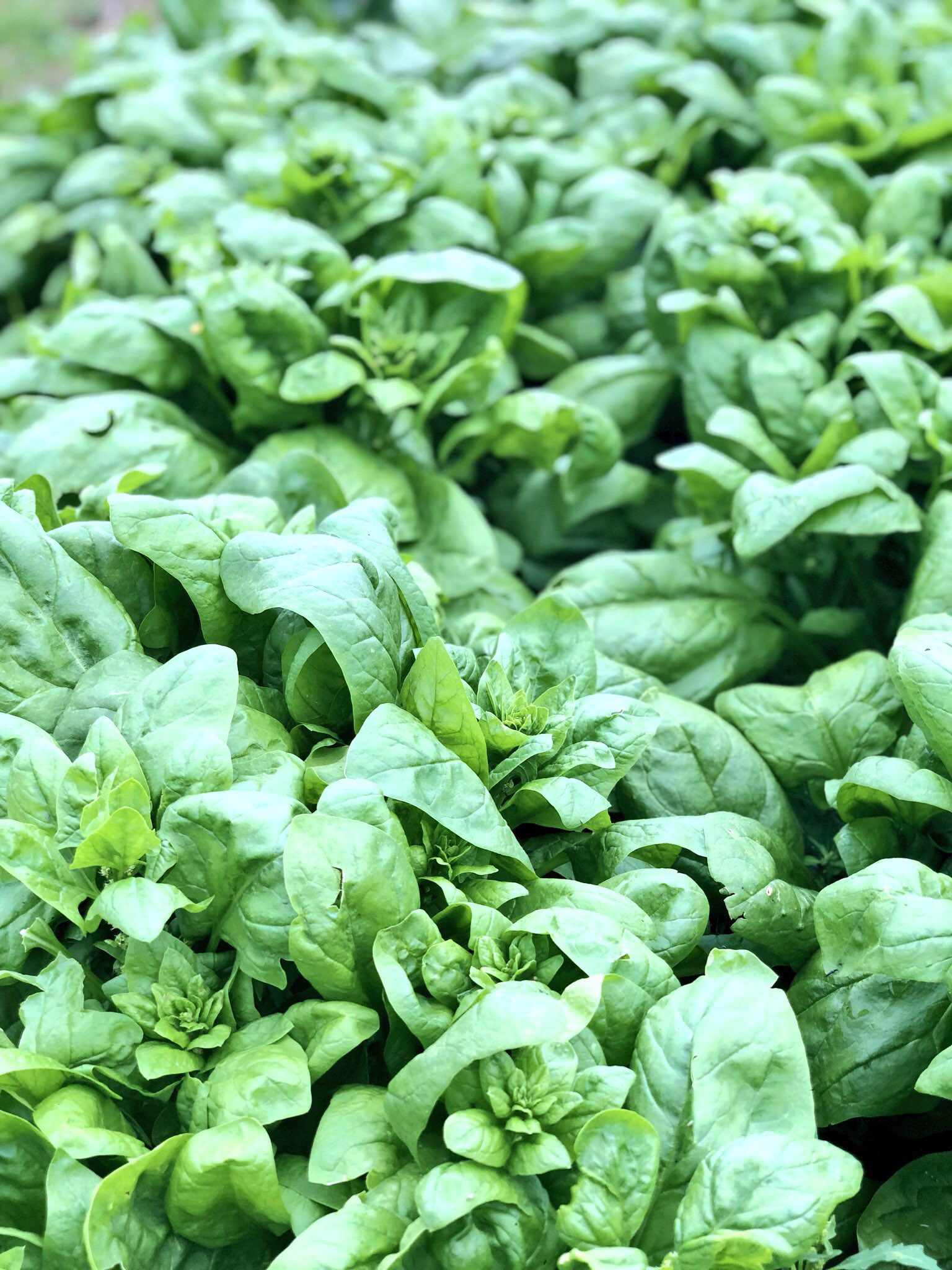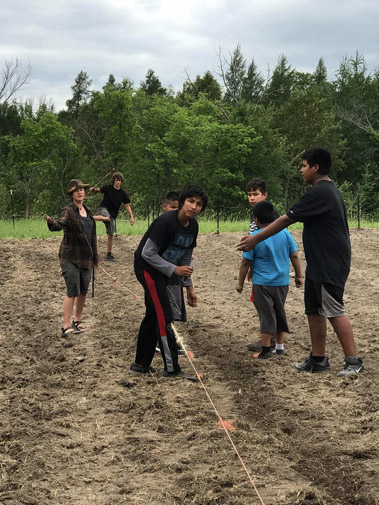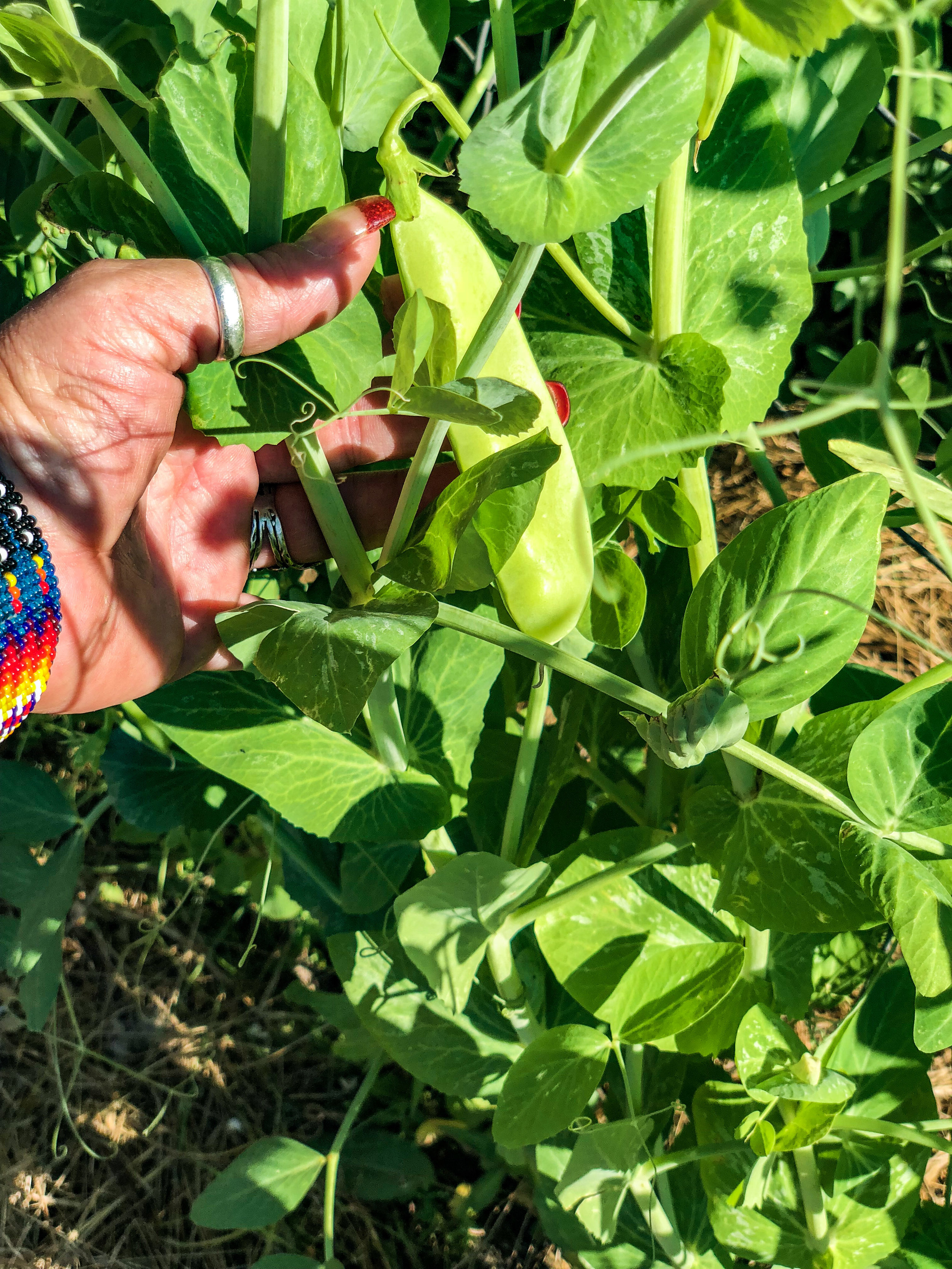Tribal Agricultural Project
Through work and collaboration like the Indigenous Farming Conference, we’ve located many seeds and varieties, and worked to re-establish traditional agriculture here on the reservation.
Artwork by Steve Premo
FROM THE SEED TO THE TABLE, FROM THE ANIMAL TO THE PLATE. A RESPECTFUL SET OF RELATIONS TO RESTORE A HEALTHY FOOD SYSTEM TO OUR PEOPLE.
In 2015, we began work with the Red Lake Band of Ojibwe on their fish bi-products. The Red Lake band has an annual catch of 700,000 pounds of ogaa (walleye) from their lake, and commercially sells 300,000 pounds of fillets. The bi-product of fish guts, bones, and other wastes is presently sold to mink farms. We developed a plan for the Band to begin a fish fertilizer factory which would help diversify the Band’s revenue. The use of this traditional fertilizer would help rebuild soil, our agricultural economy, and help combat the use of petrochemical fertilizers.
In 2016-2017, we worked with the Mille Lacs Band of Ojibwe to create a food sovereignty plan for the future of our people. This comprehensive food plan provides a regional model for restoration of food security, and is well accepted by our tribal community, and a foundation for a regional strategy.
Our seeds are our future, and they are the future of food
Our seeds are our future, and they are the future of food. “Indigenous people work with 7,000 crops and one million varieties, while the majority of industrial agriculture has whittled this down to l35 major crops and l03,000 varieties.” Scholar Pat Mooney explains “My generation is the first generation in the world that has lost more knowledge than it has gained.”
Why is this important?
Because plants are magical beings simply stated, with complex nutrients, medicinal values, cultural and spiritual connections that feed the soil and the world. Because biodiversity is the key to survival- that is the lesson of the Irish potato famine, and critical in a time of climate change. Because connection, meaning and spirit make for life.
FOOD IS MEDICINE
Our people fed ourselves and the settlers well. It’s time to go old school.
As Mary Winyerd would write in her book, North Country, “ Dakota and Ojibwe women were deep into commercial enterprise…. They ..peddled sugar, wild rice, pumpkins, corn, squash and other agricultural products to the traders and the military. With virtually no food produced for the market by whites in Minnesota country in the l840s, and fresh produce in high demand, Native women entrepreneurs, could set premium price on their small surplus harvests…..”
The magic of foods is a real medicine.
The very foods we grow have very special powers to combine. As Harriet Kuhnlein, an internationally recognized nutritionist from McGill University explains, “Like corn, beans and squash, some are nitrogen hungry and some are nitrogen producing: that is the relationship between corn and beans.” Make a meal and all is balanced. “Singularly tortillas are at 62 on the glycemic index, and beans are at 22,” Kuhnlein explains. Put together into a meal, they are at 32.
Combined, Indigenous farmers are producing today 70% of the world’s food.
Major corporations like Monsanto and Syngenta talk about climate change adapting varieties they are introducing; using billions of dollars to create 'climate smart varieties.
One-hundred, thirty-six million (USD) is the average cost for climate smart seeds per species. In the meantime, Indigenous nations worldwide are adapting our pre-petroleum varieties to the times ahead.
The magic of foods is a real medicine. There are over 300 natural medicines in plants to reduce blood sugar.
WHY ARE WE DOING THIS?
THINK ABOUT THIS: OUR ANCESTORS GREW HEALTHY FOOD, AND LOTS OF IT.
A traditional Arikara squash is higher in nutritional value than anything which find on our shelves. Arikara squash has l3% of the DRV for fiber, 64% of the DRV for vitamin A, and half the calories and double the calcium and magnesium of the market equivalent.
Then there is the corn. The traditional flint corns –whether for flour or hominy are high in carbohydrates and protein. One serving of hominy yields 47% of the DRV for fiber and 33% of the B vitamin Thiamine and has half the calories of market corn. Old can be better than hybrid, genetically engineered or brought to you by petroleum. Potawatomi lima beans are low in fat, and high in carbohydrates and protein. B vitamins are found in abundance, including thiamine, pantothenic acid, niacin and B6. Potawatomi lima beans also provide 24 grams of fiber per serving, and 2l times the anti- oxidants found in market beans.
Food is medicine, and we know that. Our ancestors ate well, and today, with heavily processed foods, sugars, and a chemical laced food industry, we are getting sick. All around us, first nations are recovering food sovereignty; the ultimate control over our nation and future.
Tribal Agricultural Research Project
Start varieties for local agriculture (April) including tobacco, squash, tomatoes, hemp, and herbs). Using these varieties as the foundation, prepare these for gifts and sales to local community, as well as larger production on parcels of land. Secure additional hemp varietals (Czech, Polish, French, Ukrainian and Italian fiber varieties as well as four CBD varietals). (Underway)
Work with horses and fish emulsion, as well as lime and other natural products to secure ph and nutrient balance for crop varieties on three to four parcels. Conduct tests on various parcels and methodologies. Work with researchers to document soil, energy and crop improvements. Develop methods to share our agricultural knowledge.
Secure additional farmland to build sustainable farming and educational operations.
Develop an intercropping and crop rotation of the hemp in the fields with corn, beans, squash, tobacco and Jerusalem Artichokes as well as other varieties. Create a farm or field plan with these crops. Utilize traditional fertilizers from Red Lake fisheries, horse manure and a combination of options and continue to test these on our food and hemp crops.
Begin process of seeking organic certification for our products.
Host three community feasts with these foods.
“In the upcoming year, we commit to growing our traditional foods, rebuilding our horse and agriculture knowledge and educating hundreds of people about industrial hemp while we grow the next economy. Our work will focus on food and fiber in a time of climate chaos. We will look at technologies, varieties, efficiency, and replicable models. This work will be at our Anishinaabe Agriculture Institute, where we will have major opportunities to share and inform on the renaissance of hemp, and Indigenous foods. We need the space and the support to grow this work and train future leaders.”
Dakota Water Protectors
Water Protectors continue to come to Minnesota to protect our Waters from tar sands pipelines. We intend to host many of them, and create the next economy. We will weave the future.
Anishinaabe Agriculture Institute is a Minnesota Non Profit Organization, which has applied for a tax exemption from the Internal Revenue Service.

















